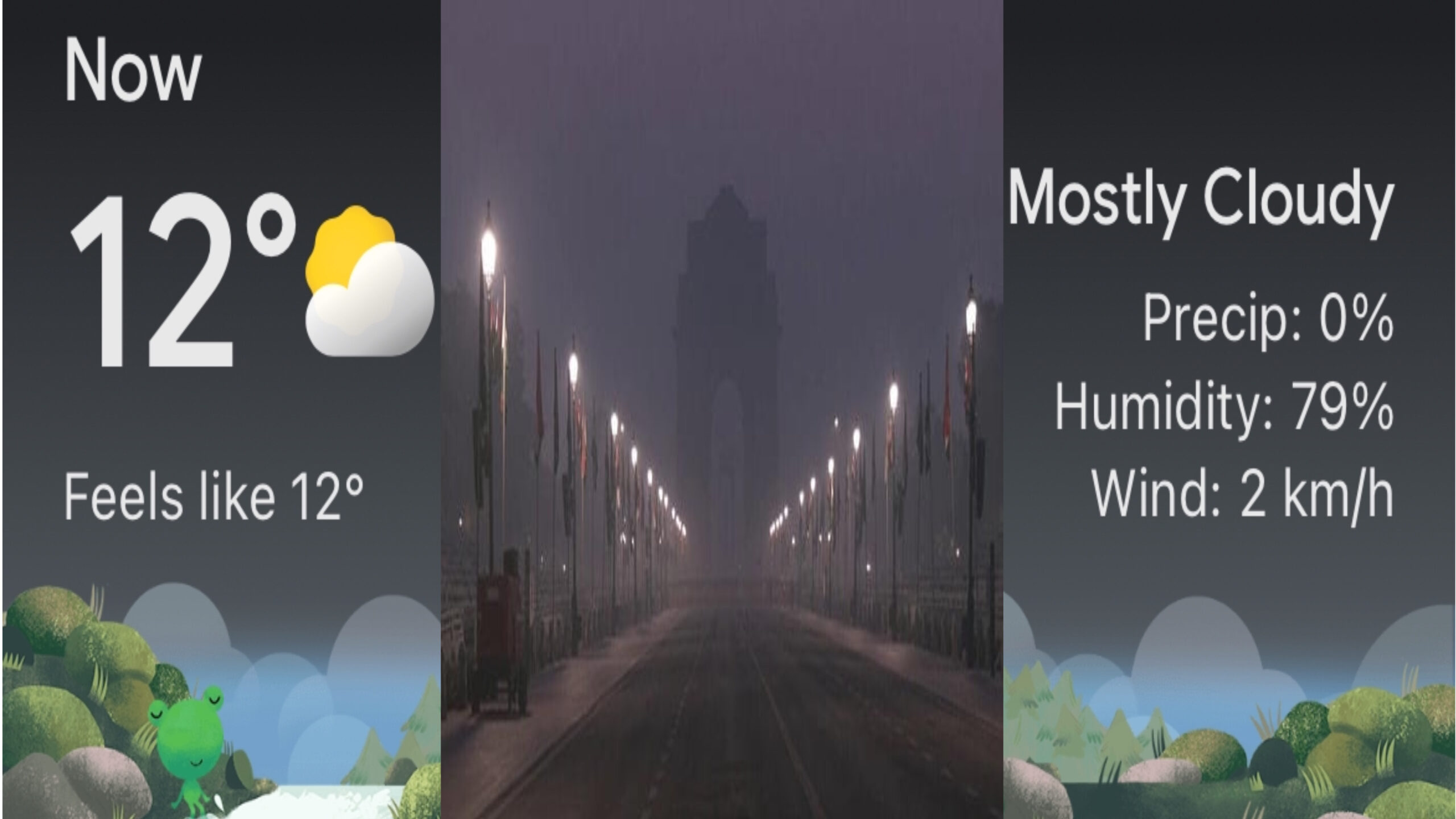Delhi and its surrounding areas experienced a chilly and foggy start to the weekend, with the India Meteorological Department (IMD) predicting no immediate relief. The IMD has forecasted that dense fog will persist in north India for the next five days, along with cold conditions expected to continue for at least two more days.
The weather bureau also observed a thick blanket of fog enveloping parts of Uttar Pradesh and Bihar in the morning, significantly reducing visibility. According to a statement, “Intense foggy conditions were observed over Uttar Pradesh and Bihar, and dense fog over Tripura at 0530 hrs IST of 28.01.2024. Visibility levels recorded were as low as 25 meters in Varanasi (Babatpur) and Purnea, and 50 meters in Bahraich, Lucknow, Gorakhpur, Sultanpur, and Kailashahar. In Patna, visibility was around 200 meters.”
According to ANI, foggy weather has led to interruptions in train services.Trains such as the Shram Shakti Express and the New Delhi-Varanasi Kashi Vishwanath Express were delayed, causing inconvenience to passengers at the New Delhi Railway Station.
In the National Capital Region, dense fog persisted for over three hours on Saturday, with visibility dropping to a mere 100 meters. The temperature in the region dropped to 4.3 degrees Celsius, which is four degrees below the average for this time of the year.
Regarding air quality in Delhi, there was a slight improvement on Sunday, with the Air Quality Index (AQI) registering at 357 in the ‘very poor’ category, with a reading of 450 in the Anand Vihar area, according to the Central Pollution Control Board (CPCB). This was an improvement from the previous day’s ‘severe’ category rating of 450.
The extreme cold and deteriorating air quality have led to health concerns among Delhi residents. Issues like coughs, colds, throat irritation, chest tightness, reduced oxygen levels, eye irritation, and even high fever have been reported. Dr. Suresh Kumar, Medical Director of Loknayak Jai Prakash Hospital, confirmed these symptoms in his interaction with ANI.
The IMD also mentioned that a western disturbance is expected to cause two phases of cold wave conditions in the western Himalayan region. The first phase is predicted to start from Sunday, followed by another from January 31, which would affect this region and the adjacent plains of northwest India. Notably, mountain peaks in the western Himalayas have been unusually devoid of snow this winter.
As for snowfall, the weather department anticipates snow over Jammu and Kashmir, Ladakh, Himachal Pradesh, and Uttarakhand. From January 29 to February 1, these areas are expected to experience moderate to widespread snowfall or rainfall. Light to moderate isolated rainfall or snowfall is also forecasted for Uttarakhand, with light rainfall expected in Punjab, Chandigarh, Haryana, and western Uttar Pradesh from January 31 to February 2.
Foggy conditions have also been hazardous on the roads in Uttar Pradesh, leading to several accidents. Three fatalities were reported in separate incidents. In Shahjahanpur district, two farmers died when their tractor-trolley overturned under a culvert. Additionally, in Etah, an 18-year-old on a bike died and two others were injured after colliding with an electric pole near ITI College.
The cold wave and dense fog have also enveloped parts of Rajasthan, Punjab, and Haryana. Hanumangarh’s Sangaria in Rajasthan recorded a minimum temperature of 3.1 degrees Celsius, making it the coldest place in the region. Meanwhile, in Punjab and Haryana, temperatures continued to stay below normal across various locations.
Moreover, the cold wave conditions show no sign of abating in Rajasthan, Punjab, and Haryana. In Rajasthan, Hanumangarh’s Sangaria recorded a chilling 3.1 degrees Celsius, the lowest in the area. Punjab and Haryana also experienced below-normal temperatures in many places, maintaining the grip of the cold wave across these states. This persistent cold spell and dense fog have not only disrupted daily life but also raised health and safety concerns, particularly in terms of respiratory issues and road safety.

